If America is to go electric as the automakers claim, access to EV charging stations will have to grow exponentially in just the next few years. As it stands today, there are 63,000 public charging stations, but only 17,460 are fast chargers. That works out to just 37 charging ports per 100,000 Americans. Industry experts estimate the US will need more than 100,000 public fast chargers for the 22 million EVs that are expected to hit American roads by 2030.
Most charging is done at home, but public chargers are an important piece of the puzzle. They are essential for interstate travel and road trips. Will hitting the road in an EV ever be as simple and hassle-free as it is in a combustion vehicle? Here are the latest developments in the world of EV charging access.
The 2021 Bipartisan Infrastructure Bill Allocates $5 Billion for Charging
President Biden, the US Department of Transportation, and the US Department of Energy announced the allocation of $5 billion over five years for the establishment of a National EV Charging Network. The funding is made possible by the Bipartisan Infrastructure Law, which was signed into law in November of 2021.
The chief goal of the charging funds is to create a network of EV charging stations along the Interstate Highway System. The total amount available to states in 2022 is $615 million, but states must submit an EV Infrastructure Deployment Plan before they can access these funds. A second, competitive grant program designed to further increase EV charging access in locations throughout the country, including in rural and underserved communities, will be announced later this year.
Learn more about how much each state is receiving to build electric car charging stations here.
Utilities Come Together to Create the National Electric Highway Coalition

Although EVs only made up 5% of US passenger vehicle sales through mid-2021, a recent survey found that 39% of Americans say they are likely to purchase an EV for their next vehicle. On top of that, OEM executives expect half of all sales to be electric in 2030, just eight years ahead. Taken together, this points towards a future where EVs are no longer fringe models with limited audiences; EVs are going mainstream.
Over 80% of charging is done at home at very affordable residential rates. The remainder is at public charging stations that vary widely in pricing. In the states that lead in EV ownership, existing charging stations often have long wait times during periods of busy travel. The need for more public charging presents a business opportunity just waiting to be taken advantage of, and now the big utilities are taking notice.
Get the most when you sell your car.
Compare and choose multiple offers in minutes:
Just this month, the Edison Electric Institute (EEI), an association representing US utilities, announced a monumental initiative to combine the forces of 51 investor-owned electric companies, one electric cooperative, and the Tennessee Valley Authority. This new coalition is a coordinated effort to install thousands of fast charging ports along major U.S. travel corridors by the end of 2023. The coalition members are committing $3 billion of their own money to bring fast chargers online over the next two years.
The 2021 bipartisan infrastructure package passed by congress allocates $7.5 billion for the expansion of charging to 500,000 charging plugs nationwide. The administration announced plans to designate highways as “corridor-ready” for electric vehicles, meaning charging stations are located no more than 50 miles apart and no more than five miles off the highway.
Updated: Will Tesla’s Supercharger Network Ever Open to Non-Tesla EVs?
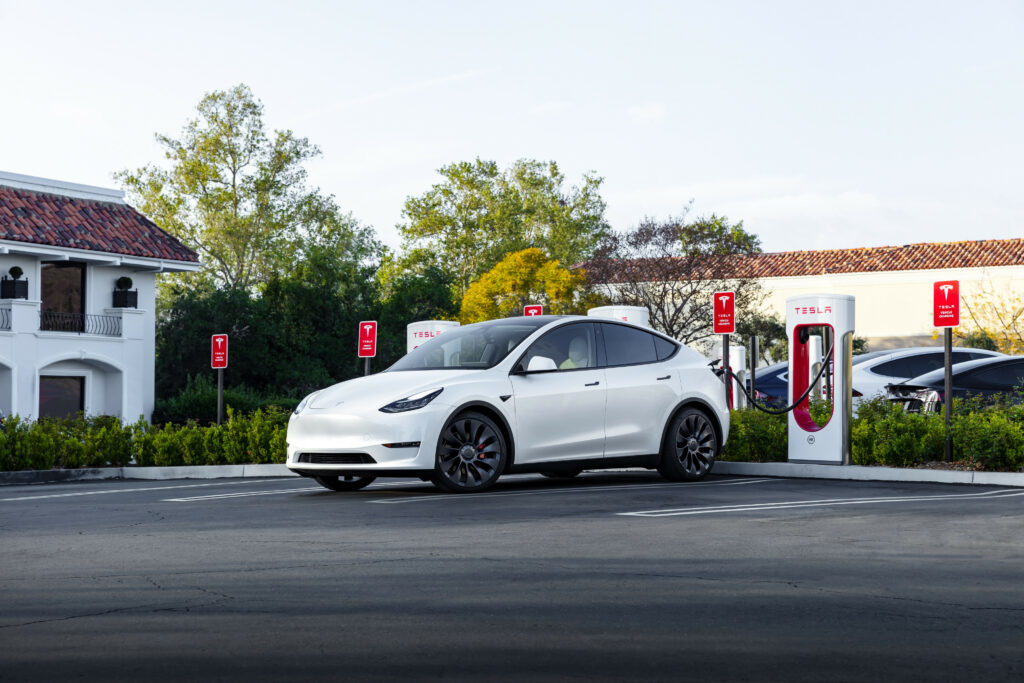
For most of the last decade, Tesla’s Supercharger network was the only nationwide fast-charging network for EV owners. It was long rumored that Tesla was on the verge of opening select Supercharger locations to all EV owners, but it appears that North American Tesla Superchargers will remain a walled garden for now. Tesla has already opened Supercharger access to all in France, The Netherlands, and Norway. Non-Teslas pay a higher price for charging, and Tesla says that will fund the continued growth of the network.
Electrify America Will Double Its Network by 2025
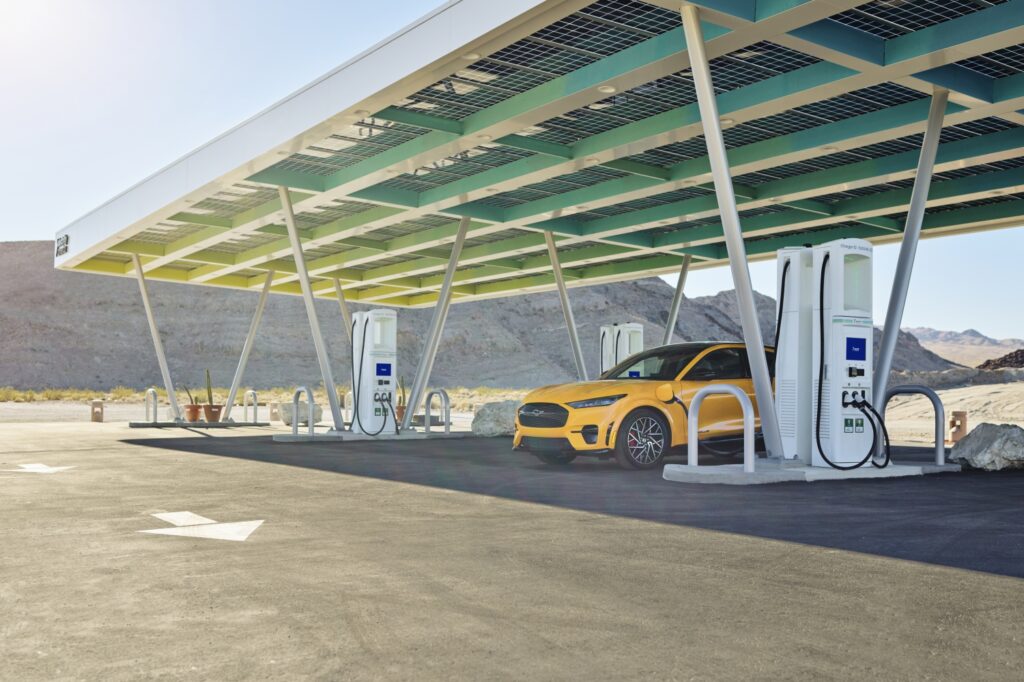
One outcome of the Volkswagen dieselgate debacle was the creation of Electrify America, a VW-funded nationwide charging network in the US. After a rocky start plagued by unreliability and low use, things are looking up for EA. This past summer, EA announced their “Boost Plan” to more than double their current EV charging infrastructure in the United States and Canada. At the end of 2021, EA has completed nearly 800 charging stations with a total of 3,500 charge ports. By the end of 2025, EA plans to have more than 1,800 fast charging stations and 10,000 individual chargers installed.
The all-new Volkswagen ID.4 electric crossover comes with three years of free fast charging at Electrify America stations. Hyundai and Ford are also offering limited free charging incentives for their EVs. As the networks expand, the value of these free charging incentives will grow.
Other Automakers are Offering Charging Networks, Either Through Partnerships or Independently
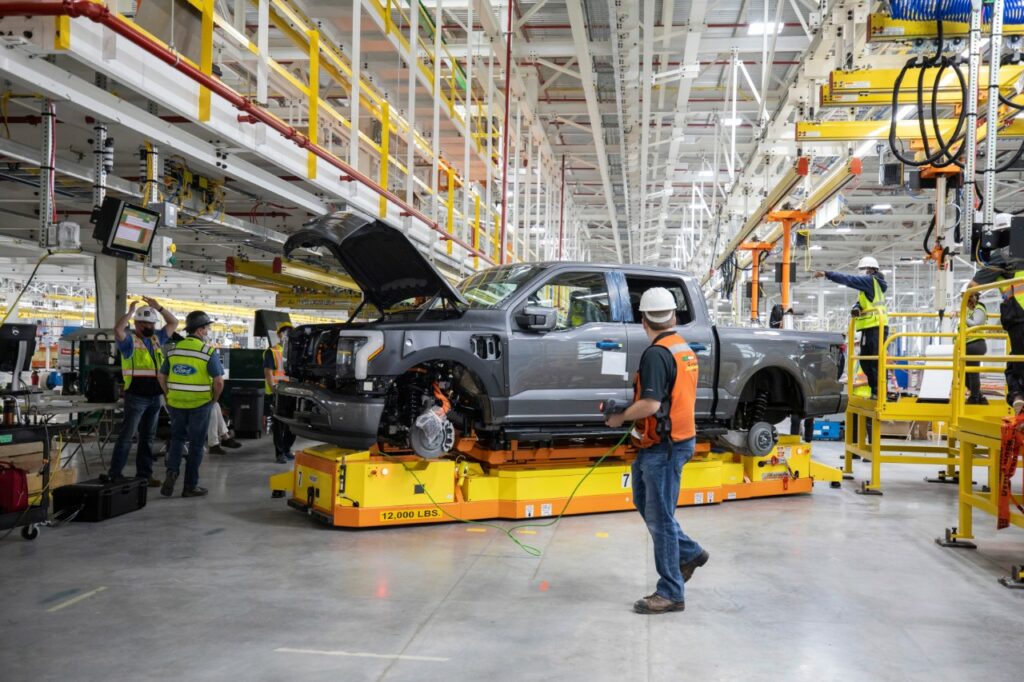
Legacy automakers and EV startups have plans to make public charging easier for their customers. GM announced Ultium Charge 360, a plan that will integrate charging networks for seamless use with all GM vehicles. They’ve established partnerships with EVgo, Blink, ChargePoint and other big names in North America. Furthermore, GM’s new Dealer Community Charging Pro will see dealerships playing an active role in bringing 40,000 level 2 chargers to underserved communities, including rural and urban locations.
Ford’s BlueOval charging network makes plug-and-charge possible for the Mustang Mach-E and future EV models, a nod to Tesla’s plug-and-charge popularity. Ford says that they want charging an EV to be as simple as stopping at a gas station.
By the end of 2023, Rivian’s Adventure Network of chargers will have 3,500 fast chargers installed at 600 sites in North America. Rivian’s brand targets outdoor enthusiasts and overlanding types, so the new network will cater to EV owners who venture off the beaten path. At first, the Rivian Adventure Network will be exclusive to Rivian owners, but the company says they will open it up to other EV brands shortly after. This is a big deal for EV owners looking for zero-emissions wilderness adventures, especially considering that the much-hyped Subaru Solterra all-wheel drive EV barely makes it 220 miles on a charge.
Will EV Charging Stations Replace Gas Stations?
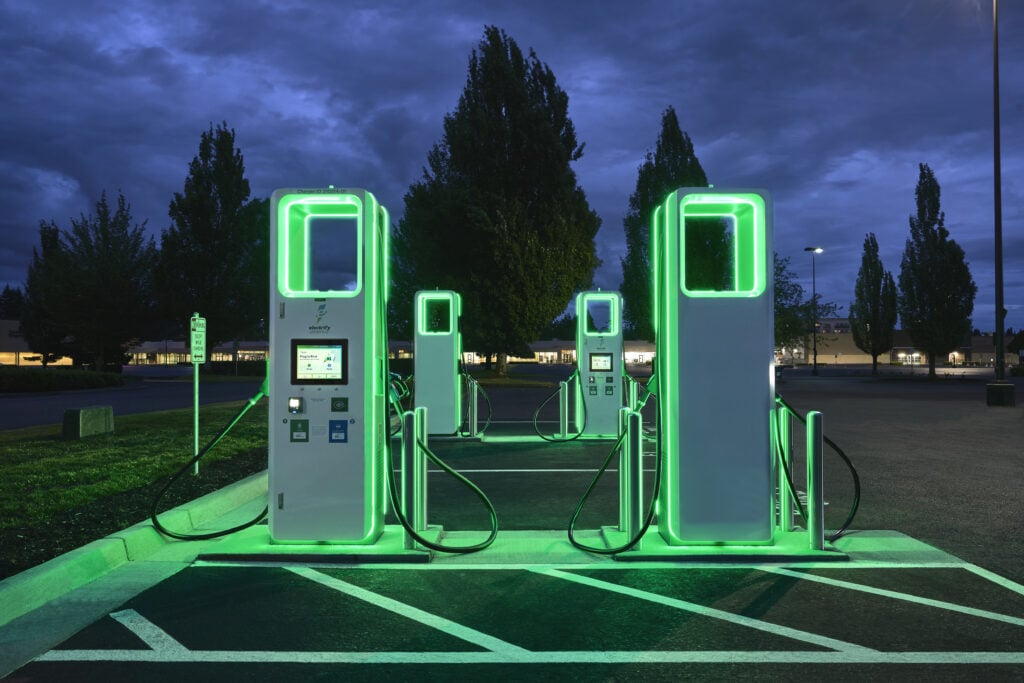
The short answer is no, not for decades, if ever. However, more and more gas stations are adding fast chargers to their parking lots. Sheetz, a popular gas station chain in the East, has been the site of many Tesla Superchargers. In Maryland, one gas station ditched gas entirely for EV charging stations. The new infrastructure bill’s $7.5 billion for EV charging will bring chargers to more gas stations, truck stops and interstate rest areas. The Department of Energy already keeps track of every fast charging station in the nation, and even has a neat map of stations to explore.
Retailers are seeing the benefits of hosting EV charging. Most Electrify America stations are located in Walmart or Target parking lots in close proximity to dining and shopping. Movie theaters and shopping malls often offer free charging for customers. This is a trend we expect to continue, bringing convenience and the occasional free charge to EV owners.
CarEdge’s Take On the Future of Charging in America
EV charging stations are great for highway adventures, but it’s important to remember that EV owners who rely on public charging will spend far more on charging than those who charge mostly at home. EV drivers who pay for public charging will see a much higher total cost of ownership, possibly even approaching that of a combustion vehicle.
More EV models are making their debut in 2022, and almost all of them charge at over 150 kW. This is great for those wanting to go electric yet dreading long waits at a charger. The next two years will transform the experience of EV ownership in America. With so many new fast chargers coming online and even better models to choose from, EV technology just might be maturing right as American infrastructure catches up with demand.








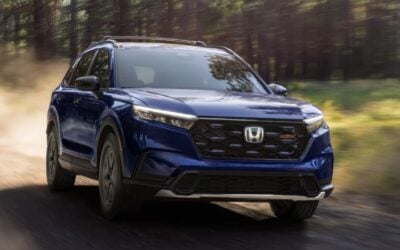

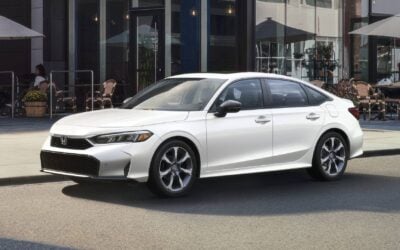


0 Comments